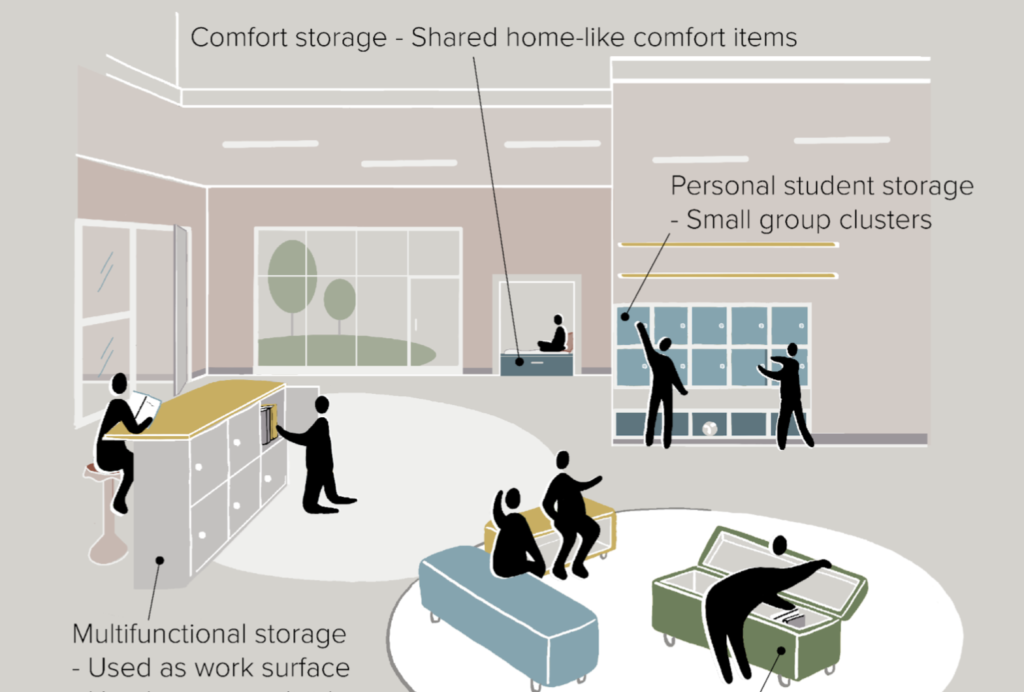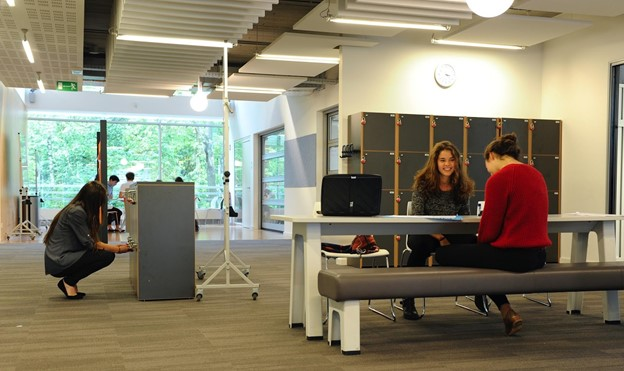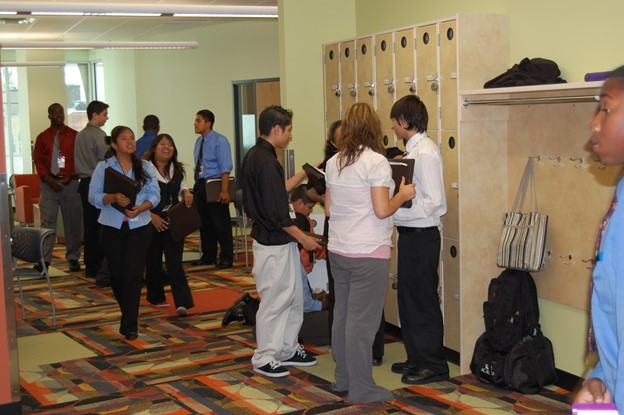Personalized Storage in Schools
Key Points
-
Many schools are moving away from rows of full-height lockers.
-
Personalizing student storage can foster more collaborative and relationship-centered spaces.
-
Personalizing student storage can be less expensive and take up less space.

Everyone wants a place for their stuff–it’s a want that’s wrapped up in our basic needs around safety, security, and belonging. Where do I keep my purse, wallet, sweater, water bottle, tablet, laptop, books, musical instrument, athletic clothes, mittens, hand moisturizer, and phone charger? But the needs and realities around homerooms, cubbies, and lockers are changing, and the old systems for student storage typically fall short.
The disparity is particularly evident between primary and secondary students. When we talk to younger students, they often say that they are looking forward to having lockers – a bit of personal space that they can control. However, the use of lockers by middle and high school students has been declining for decades. Most schools are simply providing fewer lockers, but they are missing an opportunity to provide lockers that actually build relationships and increase well-being.

In the image of the International School of Brussels above, the free-standing bank of lockable cubbies on the left is an informal island for connection. Learners moving through the space can pause, lean their elbows on the counter and chat with their peers, or use it as a temporary standing desk. The bank of cubbies on the right anchors the collaborative work table in the foreground; it also has coat hooks on the end, for jackets, removing the necessity for full height lockers, which can dominate a space.

We can see a number of elements that nurture relationships and personal well-being in the image of Cristo Rey Jesuit High School in Minneapolis, above. Small groupings of partial height lockers provide enough storage for personal items, with a shelf, rod, and hooks adjacent for backpacks and coats. Rather than long banks of lockers in hallways, the smaller grouping invites learners to connect with each other.
We don’t need to eliminate student storage in schools because rows of full-height lockers aren’t being used well. Instead, let’s provide a variety of storage elements that build relationships and enhance individual well-being. A varied and personalized approach to student storage has the additional benefit of allowing for more wall surfaces, freeing up space for writable surfaces, student displays, and increased transparency using interior windows.
A strategy for distributed storage elements of varying types uses less space, is less expensive, and can even support school buildings with a slightly smaller footprint, making our planet more sustainable.







0 Comments
Leave a Comment
Your email address will not be published. All fields are required.